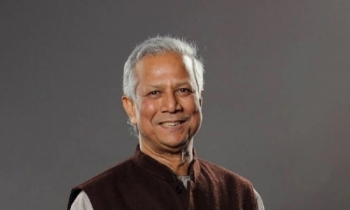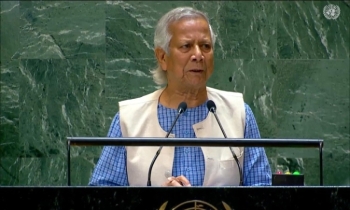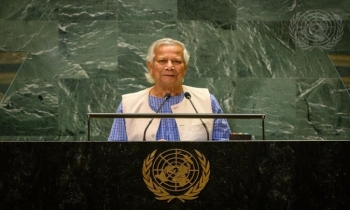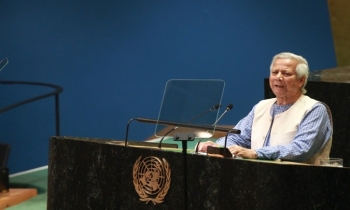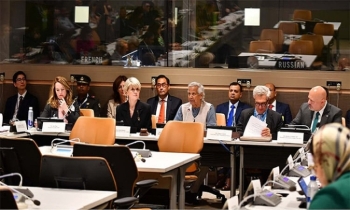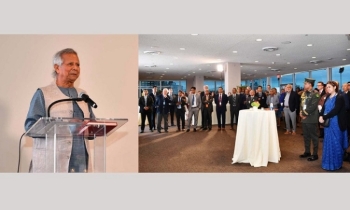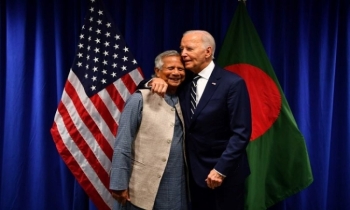Kawla-Tejgaon elevated expressway becomes visible
BI Desk || BusinessInsider

Photo: Collected
The kawla-Tejgaon portion of the four-lane 19.73 km Dhaka Elevated Expressway (DEE) is now visible as the overall progress of the construction work is over 57 percent till January this year.
“The much-anticipated four-lane 19.73 km Dhaka elevated expressway, having 31 ramps, is being constructed under Public Private Partnership (PPP) to ease vehicular movement in and around the capital,” DEE Project Director AHMS Aktar told Bangladesh Sangbad Sangstha over phone on Sunday.
He said the government has undertaken the elevated expressway project to connect the capital to the Dhaka-Chattogram Highway (Kutubkhali).
According to the project, the First Dhaka Elevated Expressway (FDEE) Company Ltd is the investor company.
Italian Thai Development Public Company Ltd has 51 percent shares, China Shandong International Economic and Technical Co-operation Group (CSI)’s 34 percent and Sinohydro Corporation Ltd has 15 percent shares.
The total expenditure of the project is estimated at Tk 8,940 crore. Of the total cost, Tk 2,413 crore will be provided by Bangladesh government.
As per the project, the first contract was signed on January 19, 2011 and the reviewed agreement was signed on December 15, 2013 and the project completion period was from July 2011 to June 2024.
The total length of the elevated expressway is 46.73 km including 19.73 km main elevated portion, 31 ramps having 27 km long in and out route for vehicles.
The project director said the first phase-Kawla, southern side of the Hazrat Shahjalal International Airport to Banani Railway Station stretching 7.45 km, has already been completed.
The second phase from Banani Railway Station to Moghbazar Railway Crossing is progressing, while Banani-Mohakhali DOHS and Nakhalpara-Tejgaon portion of the elevated expressway have been completed, he said.
“We have started construction work of 6.43 km third phase stretching from Moghbazar Railway Crossing to Dhaka-Chattogram Highway, Kutubkhali,” Aktar said.
The first part of the flyover from Kawla to Banani, adjacent to the airport, is now almost ready. Road carpeting of about 7.5 kms of this section has been completed.
The construction of the ramps of the flyover is in the final stage. Now, if only the connecting road carpeting of the expressway from Kawla to Banani is completed, it will make it fully ready for vehicular movement.
In the meantime, installing street lights has also started. The work of erecting railings on both sides of the road is also going on. Kawla to Banani section will be made fully ready withing a few days.
Concrete casting on the second part of about 6 km flyover road from Banani to Tejgaon section is in the final stage. Movement of vehicles up to Tejgaon will be opened in the first phase.
Separate toll plazas will be installed for collecting toll from vehicles, as investor companies will realize their invested money from the elevated expressway project.
In the last 14 years, several infrastructure projects have been initiated in Bangladesh.
Considering the size, budget, and economic impact, many of these projects have been termed as mega-projects.
The government has also identified a few of them as fast-track projects.
Among these, the Padma Multipurpose Bridge, Bangladesh’s first metro rail project MRT Line-6 and Chandra-Elenga four-lane highway were completed.
In addition, to strengthening the country’s economy, the government has started giving importance to new infrastructural projects and ongoing projects.
Bangabandhu Sheikh Mujibur Rahman Tunnel, the first and longest underwater road tunnel in South Asia, is expected to be completed soon.
The country witnessed a good number of development projects which raised Bangladesh’s GDP.
The other projects-Padma bridge rail link, Chattogram-Cox’s Bazar rail link, Rooppur nuclear power plant, Matarbari 1200MW coal-fired power plant, the Payra deep sea port, Bangabandhu Sheikh Mujibur Rahman Railway Bridge over the river Jamuna, are extremely crucial to the country’s economic growth and hence the key focus of the government now is on timely completion.
After the Awami League government came to power in 2009, it took up several monumental development projects with the view to bringing revolutionary chance in the country’s communication and transportation system.


